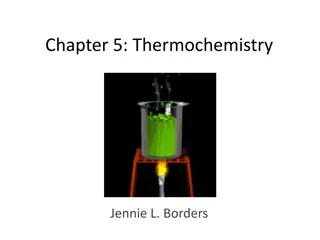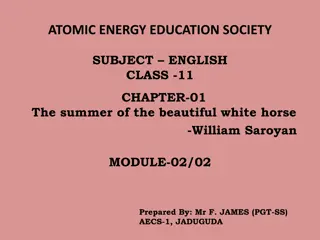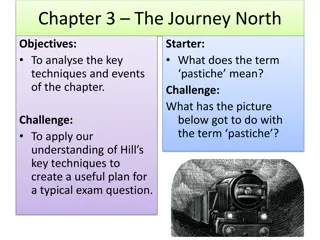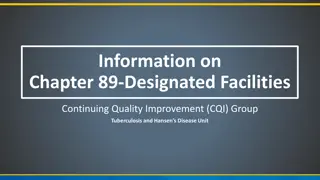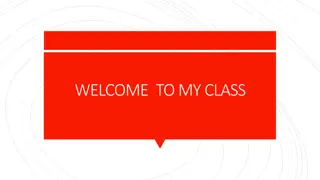
Understanding the Human Circulatory System and Blood Components
Explore how materials move around the human body through the circulatory system, including the functions and components of blood like plasma, red blood cells, and white blood cells. Learn how plasma affects body temperature regulation and the crucial role of oxygen transportation by red blood cells.
Download Presentation

Please find below an Image/Link to download the presentation.
The content on the website is provided AS IS for your information and personal use only. It may not be sold, licensed, or shared on other websites without obtaining consent from the author. If you encounter any issues during the download, it is possible that the publisher has removed the file from their server.
You are allowed to download the files provided on this website for personal or commercial use, subject to the condition that they are used lawfully. All files are the property of their respective owners.
The content on the website is provided AS IS for your information and personal use only. It may not be sold, licensed, or shared on other websites without obtaining consent from the author.
E N D
Presentation Transcript
How do materials pass around our body? The human body needs a transport system to move materials from one place to another. For example, food, oxygen and waste products have to be moved to and from all the cells in our body. Our circulatory or transport system is made up of: o Blood o A system of tubes or blood vessels o The heart, which is needed to pump blood through blood vessels.
What is in our blood? Blood is made up of four parts, or components: o Plasma o White blood cells o Red blood cells o Platelets.
Plasma Plasma is the liquid part of blood. It is a pale yellow colour and is mostly made of water. It also transports many useful chemicals and wastes around the body, such as: o Foods and water o Carbon dioxide and salts. Plasma also transports heat from one part of the body to another. Heat is produced by chemical reactions in all our body cells. By transporting heat, our blood plays an important role in maintaining our body temperature at 37 C. Plasma also carries: o Red blood cells o White blood cells o Platelets.
How plasma affects body temperature When we are too hot, blood vessels in our skin expand (dilate). This means extra blood (plasma) is sent to our skin (especially to the face, causing it to go red). This allows more heat to pass out of our body and we cool down. This can happen when we are ill. In this case our body temperature may rise (we have a fever). The high temperature helps to destroy the bacteria and viruses that are causing us to be ill. When we are too cold, blood vessels in our skin become smaller. Blood also moves from our extremities to our core. This means we lose less heat from our body.
Red blood cells Red blood cells are made in bone marrow located in the centre of bones. Red blood cells contain a red-coloured chemical (or pigment) called haemoglobin. To make haemoglobin we need iron. Our blood contains huge numbers of red blood cells. Haemoglobin, and therefore red blood cells, carries oxygen.
The path of oxygen Oxygen enters our red blood cells in the lungs. It attaches to haemoglobin in the red blood cells. When blood reaches cells in other parts of our body (such as our muscles or the brain), haemoglobin releases the oxygen into these cells.
White blood cells White blood cells are also made in bone marrow. White blood cells fight infection: o Some white blood cells surround micro-organisms (such as bacteria and viruses) and destroy them o Other white blood cells form proteins called antibodies. Antibodies help to destroy micro-organisms that have entered the body. Antibodies are very important in fighting infection.
Platelets Platelets are formed in bone marrow when large cells break down into smaller pieces. Platelets help to form blood clots. In this way they help to prevent: o Loss of blood o Micro-organisms entering the body.
Why do we need blood? We need blood for a number of reasons. Each of the four parts of blood has its own role (or function) as shown below. Part of blood Function Plasma Transports materials such as foods and wastes Transports heat around the body Red blood cells Transport oxygen White blood cells Fight infection Platelets Clot the blood
What are blood vessels? There are three main types of blood vessel: o Arteries o Veins o Capillaries. Arteries Arteries carry blood away from the heart. (Remember a is for artery and for away.) As a result of carrying blood away from the heart, there is a strong flow of blood in arteries. We say that the blood in arteries is under high pressure.
What are blood vessels? There are three main types of blood vessel: o Arteries o Veins o Capillaries Veins Veins carry blood to the heart. The blood flow, or pressure, in a vein is lower than in an artery.
What are blood vessels? There are three main types of blood vessel: o Arteries o Veins o Capillaries Capillaries Capillaries are tiny blood vessels. They are found between arteries and veins. There is a huge number of capillaries in the human body. The walls of a capillary are very thin. They allow materials to pass into and out of the capillaries. For example, in our intestines food passes into blood capillaries. This food is carried by the bloodstream to all the cells of the body. The food later passes out of the capillaries to enter the body cells.
The heart The heart is about the size of a clenched fist. It is located between the middle and the left- hand side of the chest. The heart is made of a special type of muscle called cardiac muscle. Cardiac muscle is very strong and does not tire easily. Cardiac means anything related to the heart.
The heart The heart contracts in order to pump blood around our body in blood vessels. The force of this blood in an artery causes a pulse. When we are resting, the average rate of an adult heartbeat is 70 beats per minute. When we exercise, the heart beats faster. This causes blood and the materials it carries to move faster around our body.
Structure of the heart Parts of the heart Atria Chambers: The heart contains four chambers. The top two are the right atrium and the left atrium (plural atria) and the bottom two are the right and left ventricles. Ventricles
Structure of the heart Parts of the heart Septum: The two sides of the heart are separated by a muscular wall called the septum. Septum
Structure of the heart Parts of the heart Valves Heart valves: Valves in the heart make sure that blood can flow only in one direction. In this way, they are similar to valves in a car tyre or football (which let air pass in, but not out). Valves
How blood flows through the heart Blood from the arms, legs and other parts of the body enters the right atrium of the heart through the vena cava. This blood is low in oxygen. The right atrium contracts to pump the blood down through a valve into the right ventricle.
How blood flows through the heart When the right ventricle contracts, the valve shuts to prevent the blood from going back into the right atrium. As a result, blood is pumped out of the heart in the pulmonary artery to the lungs. In the lungs, the blood gains oxygen (and also loses carbon dioxide and water vapour).
How blood flows through the heart Blood from the lungs flows back into the left atrium of the heart through the pulmonary vein. This blood is now rich in oxygen. The left atrium contracts to pump the blood through a valve and into the left ventricle.
How blood flows through the heart The left ventricle contracts, the valve snaps shut and blood is forced out of the heart through the aorta. It then passes all around the body. Eventually this blood will lose oxygen to the body cells. It will return to the heart in the right atrium. The cycle then starts all over again.
The ventricles of the heart The right ventricle pumps blood from the heart to the lungs. This is a reasonably short distance, and so the muscular walls of the right ventricle are fairly thin. The left ventricle pumps blood from the heart all around the body. This is a very long distance, and so the muscular walls of the left ventricle are very thick.
Pulmonary artery and vein Most of the arteries in the body carry oxygen-rich blood. However, the pulmonary artery is an exception to this rule as it carries blood low in oxygen. Most of the veins in the body carry blood low in oxygen. However, the pulmonary vein is an exception to this rule as it carries oxygen-rich blood.
The two blood circuits The circulatory system consists of two circuits: o In the lung circuit, blood flows from the heart to the lungs and back to the heart o In the longer body circuit, blood flows from the heart to the rest of the body and back to the heart again.
What is a pulse? When blood is pumped through the arteries, the pressure causes the arteries to expand. This wave of pressure is called a pulse. A pulse can be felt in areas of the body where the arteries are close to the surface, for example at the wrist and in the neck. The pulse rate is used to measure the rate of heartbeat.
How exercise affects pulse rate When we exercise, the cells in the body (especially in the muscles) need increased supplies of food and oxygen. In addition, the cells need to get rid of extra amounts of carbon dioxide and heat. As a result, exercise causes the heart to beat faster and our pulse rate increases.
What happens to blood in different parts of the body? Organ Blood gains Blood loses Lungs Oxygen Carbon dioxide and water Intestines Food, water and carbon dioxide Oxygen Head/arms Carbon dioxide and water Oxygen and food Lower body/legs Carbon dioxide and water Oxygen and food
Photo credits Science Photo Library Shutterstock Michael Philips QBS





